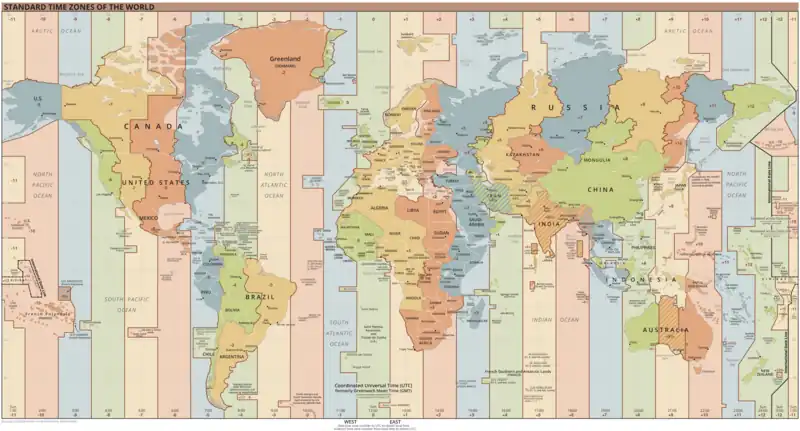Imaginary line
In general, an imaginary line is usually any sort of geometric line (more generally, curves) that has only an abstract definition and does not physically exist. In fact, they are used to properly identify places on a map.

Time zones are imaginary lines
Some outside geography do exist, such as the Mendoza Line, which in baseball divides below-average hitters and extremely poor hitters. A centerline is a nautical term for a line down the center of a vessel lengthwise.
Examples
Geography
As a geographical concept, an imaginary line may serve as an arbitrary division, such as
- Antarctic Circle,
- Arctic Circle,
- Border,
- International Date Line,
- Latitude, including the Equator,
- Longitude, the Prime Meridian, the Tropic of Capricorn and the Tropic of Cancer.[1] Any axis about which an object spins is an imaginary line.
- Mason–Dixon line, which informally marks pieces of the borders of four U.S. states: Delaware, Maryland, Pennsylvania, and West Virginia, once part of Virginia. Symbolically, the line separates the Northern United States from the Southern United States,
- Missouri Compromise Line,
- Time zones.
Science and engineering
See also
References
- Rosenberg, Matt (January 26, 2020). "Major Lines of Latitude and Longitude on a World Map".
This article is issued from Wikipedia. The text is licensed under Creative Commons - Attribution - Sharealike. Additional terms may apply for the media files.